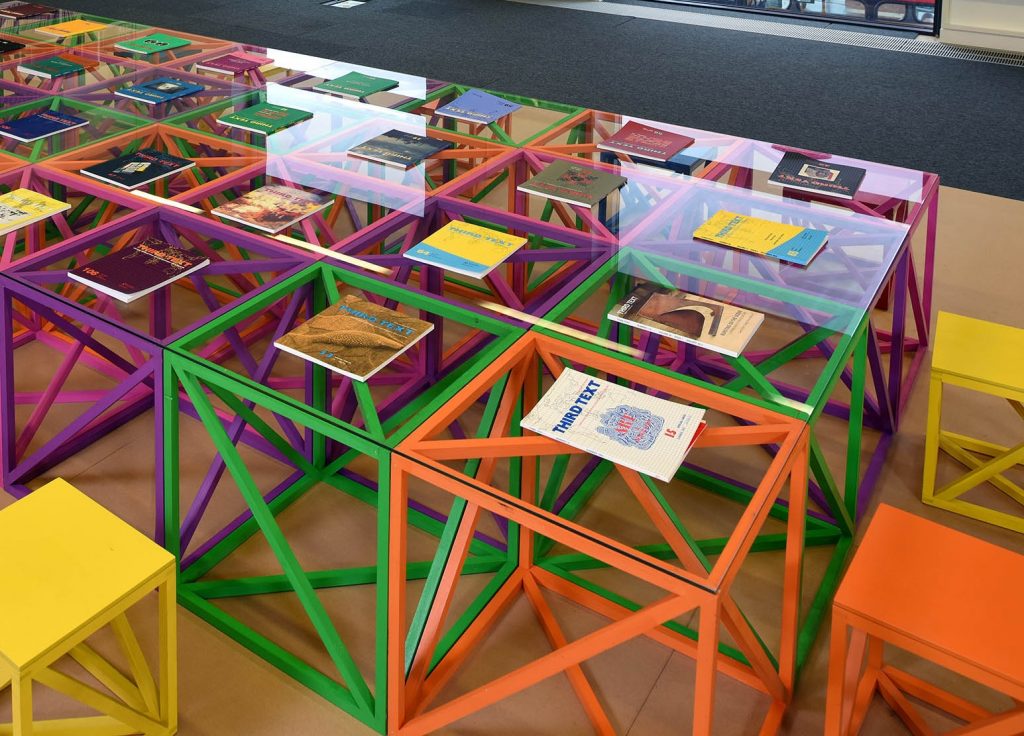Home » Rasheed Araeen Reading Room

In a year marked by milestones – The Line’s 10th anniversary and Rasheed Araeen turning 90 – a new site-specific sculptural commission, Untitled The Line by Rasheed Araeen, will launch during London Sculpture Week.
Showcasing Araeen’s iconic use of bold colour and geometric form, the installation comprises eight open steel cubes, painted in the artist’s distinctive primary colours, forming a six-foot square sculpture. Trained as an engineer in Karachi, Araeen’s practice references architectural and engineering structures as well as minimalist art. Here, the work enters into dialogue with the surrounding industrial landscape, most notably the railway bridge and its geometric steel struts.
Situated beside the River Lea with its rich industrial heritage and diverse bird, plant and wildlife, Araeen’s first semi-permanent outdoor installation in London invites visitors and the local community to explore the waterways and discover one of Britain’s most pioneering minimalist sculptors.
As part of London Sculpture Week, The Line will host a free installation of Rasheed Araeen’s Reading Room at The House Mill E3. Open from 12-5pm, Friday 26th – Sunday 28th September, visitors will have access to key publications from Araeen’s long career, with The Line’s Youth Guides on hand to introduce texts including editions of Third Text and early catalogues from Araeen’s curatorial projects and activism. The Reading Room, The House Mill, Three Mill Lane, E3 3DU. Closest tube, Bromley-by-Bow
Co-curated with Arup Phase 2 and developed in collaboration with Arup.
Supported by Henry Moore Foundation, Arts Council England and Canal & River Trust.
Courtesy of the artist and Grosvenor Gallery.
About Rasheed Araeen
Born and educated in Pakistan, Rasheed Araeen trained as an engineer before moving to Europe in the 1960s to become one of the pioneers of minimalist sculpture in Britain. In the following decades, Araeen’s practice – in performance, photography, painting and sculpture – began to develop an overtly political content which drew attention to the way in which Black artists were invisible within the dominant Eurocentric culture.
Through his activities as a publisher, writer, and artist, Araeen was a pivotal figure in establishing a Black voice in the British arts. In 1987 he founded the groundbreaking journal Third Text and in 1989 he curated the seminal exhibition The Other Story, Afro-Asian artists in post-war Britain at the Southbank Centre. This was the first major retrospective of work by Asian and African artists in Britain, all of whom had made significant contributions to the artistic scene since the 1950s.